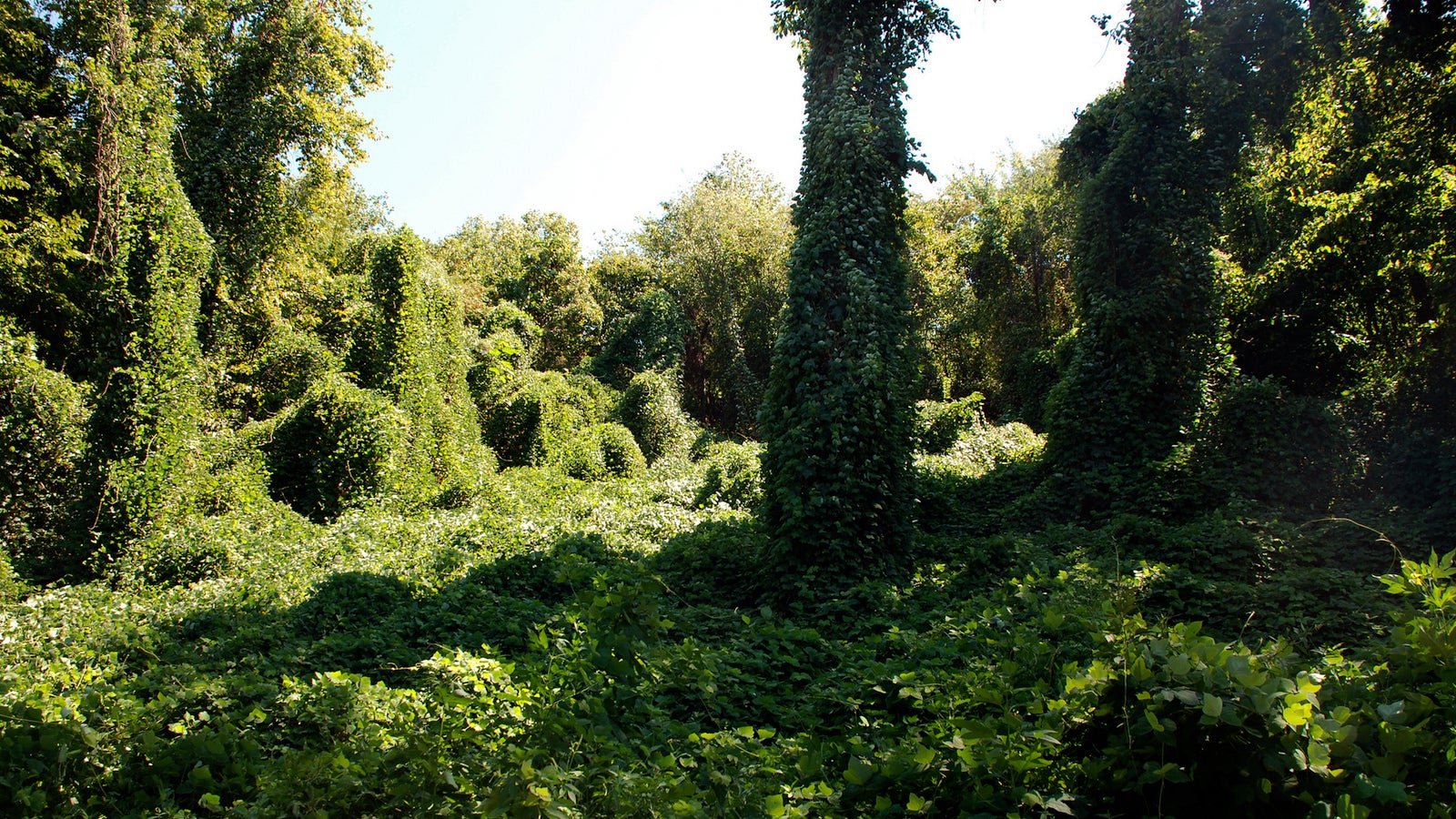The race to outsmart invasive plants before they get the best of us
Some climate change apocalypse narratives are inherently dramatic: thriving metropolises plunged underwater, “megadroughts” that could cause millions to be displaced. But there’s a far more prosaic danger that’s already underway: the human race may get taken down by weeds.


Some climate change apocalypse narratives are inherently dramatic: thriving metropolises plunged underwater, “megadroughts” that could cause millions to be displaced. But there’s a far more prosaic danger that’s already underway: the human race may get taken down by weeds.
Weeds and vines, fueled by warmer temperatures and an excess of carbon in the atmosphere, could slowly destroy the planet’s biodiversity over a period of many generations. If left unchecked, they may gnaw away at our crops until there’s nothing left.
Few people outside of the scientists who actually study these plants are sounding the alarm. But invasive plant species are thriving in the era of climate change. Most unnervingly, these pests are far better equipped to survive in our new climate than the edible plants upon which humans and animals depend. Invasive plants can multiply rapidly through self-cloning and spread easily from place to place. Some of them, like kudzu—a plant nicknamed “The Vine that Ate the South”—are even capable of devouring entire homes.
🎧 For more intel on invasive species, listen to the Quartz Obsession podcast episode on kudzu. Or subscribe via: Apple Podcasts | Spotify | Google | Stitcher.
“Invasive plants don’t look like the killer plant from Little Shop of Horrors,” Bethany Bradley, a professor in the department of environmental conservation at the University of Massachusetts, Amherst, tells Quartz. “They’re more insidious, you follow their movements almost like looking at time lapse photography. It’s like the effect of watching someone losing weight very slowly over time.”
We’ve brought this threat upon ourselves. Kudzu, for example, is native to East Asia and was brought to America in 1876 for the first official World’s Fair. At the time, it was billed as a kind of wonder plant that could shade people’s homes during hot summers and serve as cattle feed. Kudzu spread rapidly throughout the Deep South, where it quickly developed the reputation of being a plague on farmlands—resistant to treatments and nearly impossible to kill. Within the last five years, kudzu has made its way northward to places like Long Island. The plant has never been seen in Long Island before, according to Dr. Jessica Gurevitch, a scientist from Stony Brook University.
Poison ivy, a plant native to Long Island, has also shown evidence of producing far stronger levels of toxicity in recent years, according to Gurevitch. The pesky plants not only live longer, but can also give people more severe rashes than they could in previous eras.
Climate change is likely tied to both the migration of kudzu and the mutation of poison ivy, according to Gurevitch and other scientists focused on ecology and plant life. Kudzu, for example, is taking advantage of warmer winters in the north that are no longer strong enough to blunt its assault. The toxicity in poison ivy is likely a result of more carbon dioxide in the atmosphere—which also plays a role in strengthening kudzu’s staggering engine of self-replication. Now, as kudzu reaches farmland in northern states, it threatens to devour more essential crops, choking them with an engulfing sprawl of creeping vines.
While the migration of invasive plants to northern states is already happening, that doesn’t necessarily mean they’ll leave their place of origin, according to Antonio DiTomasso, a professor at Cornell University’s Weed Ecology and Management Lab. That could potentially lead to an overabundance of unwanted vegetation across the US and beyond.
“What we see in estimates is that the climate in New York by 2050 may resemble that of present day Maryland, and that the climate of Maryland may resemble that of present day Georgia,” Di Tomasso tells Quartz. “And the plants climb along with the trend.”
DiTomasso worries that our current management tactics aren’t capable of keeping up with the threat of invasive species. As these plants flourish in our changing environment, they may also become more resistant to herbicides, evolving around our attempts to eradicate them. Morning glory flowers could become a threat to soy crops, he says. And Johnson grass, a plant native to the Mediterranean, is already wreaking havoc in places like the Carolinas on cash crops like tobacco and cotton. It could be heading northward soon, bringing its nearly indestructible underground stems along for the ride.
Some plans are being formed to counter the threat of the impending vegetation apocalypse. Dr. Lewis Ziska, a research plant physiologist with the US Department of Agriculture, and one of the leading experts in the field of invasive species, is actively researching the ways in which human beings can adapt to a changing ecosystem. One option could be to turn the starch-heavy kudzu into a source of ethanol fuel. He’s also revisiting the more weed-like ancestors of our current crops like rice and wheat as a way of finding food more likely to survive the changing environmental landscape.
It’s clear that humans need to take aggressive action to combat the threat of invasive species. “There are always things we can do to make things better for ourselves,” Gurevitch tells Quartz. “It does no good to say the situation is hopeless. The point is that we have to recognize that something bad is happening and then do something about it.”